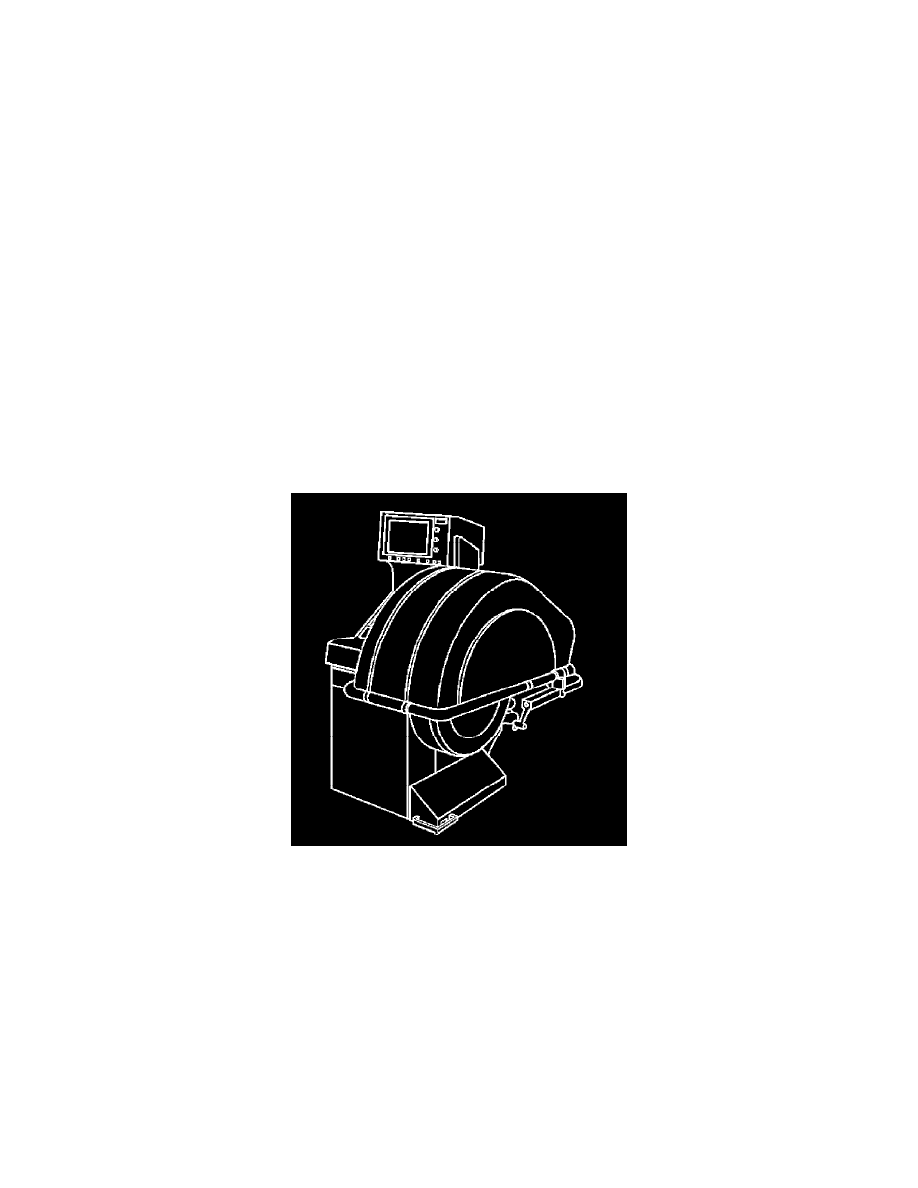XL-7 2WD V6-3.6L (2007)

Wheels: Procedures
Tire and Wheel Assembly Balancing - Off Vehicle
Tire and Wheel Assembly Balancing - Off Vehicle
WARNING:
Failure to adhere to the following precautions before tire balancing can result in personal injury or damage to components:
^
Clean away any dirt or deposits from the inside of the wheels.
^
Remove any stones from the tread.
^
Wear eye protection.
^
Use coated weights on aluminum wheels.
Tire and Wheel Assembly Balancer Calibration
Tire and wheel balancers can drift out of calibration over time, or can become inaccurate as a result of heavy use. There will likely not be any visual
evidence that a calibration problem exists. If a balancer is not calibrated within specifications, and a tire and wheel assembly is balanced on that
machine, the assembly may actually be unbalanced. Tire and wheel assembly balancer calibration should be checked approximately every 2 weeks, if
the machine is used frequently, and/or whenever the balance readings are questionable.
Tire and Wheel Assembly Balancer Calibration Test
NOTE:
If the balancer fails any of the steps in this calibration test, the balancer should be calibrated according to the manufacturer's instructions. If the
balancer cannot be calibrated, contact the manufacturer for assistance.
Check the calibration of the tire and wheel assembly balancer according to the manufacturer's recommendations, or perform the following test.
1. Spin the balancer without a wheel or any of the adapters on the shaft. 2. Inspect the balancer readings.
Specification
Zero within 7 g (1/4 oz)
3. If the balancer is within the specification range, balance a tire and wheel assembly - that is within radial and lateral runout tolerances - to ZERO,
using the same balancer.
4. After the tire and wheel assembly has been balanced, add an 85 g (3 oz) test weight to the wheel at any location.
5. Spin the tire and wheel assembly again. Note the readings.
^
In the static and dynamic modes, the balancer should call for 85 g (3 oz) of weight, 180 degrees opposite the test weight.
^
In the dynamic mode, the weight should be called for on the flange of the wheel opposite the test weight.
6. With the assembly unbalanced to 85 g (3 oz), cycle the balancer 5 times.
7. Inspect the balancer readings:
Specification
Maximum variation: 7 g (1/4 oz)
8. Index the tire and wheel assembly on the balancer shaft, 90 degrees from the previous location.
9. Cycle the balancer with the assembly at the new location.
10. Inspect the balancer readings:
Specification
